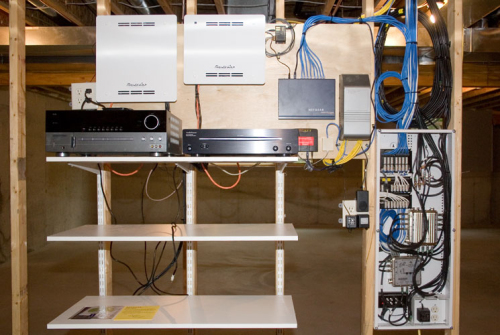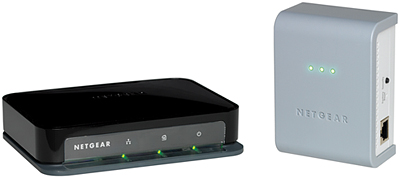My house was built in an era before structured wiring had made its way to residential applications, so I don’t have any one central panel I can access to make changes to my network or TV situation. All I can do is dream and enviously admire photos like this one:

I could pay someone a few hundred (thousand?) dollars to fish miles of new wiring through my walls, but that seems like a lot of trouble for not a lot of benefit. My house is so small that I don’t even think an access panel would fit anywhere hideable.
I’ve got no cat5/6 running through my walls, just three lines of RG6 to serve the whole house, and four phone jacks floating around in inconvenient places. I’m practically living in the dark ages!
We’re in the process of losing an office and gaining a baby room and that means that the DSL modem, router, computer, Vonage box, and printer all needed to be relocated to the dining room. There’s no phone jack for the DSL in the dining room so I had to get creative.
I’ve been running devices in my home theater off of a HomePlug AV device for a year or so and it’s worked pretty well, so I decided to ramp up the whole operation.

Every device on my network is now connected over power lines and it works great. My router feeds the whole network with a single XAV101 adapter. I’ve got another one in the garage hooked up to an old NAS, one XAV1004 switch hooked up to the home theater, and another XAV1004 hooked up to the PC/printer/Vonage. In a perfect house with perfect wiring HomePlugAV devices would connect at 200Mbps, but I usually see numbers closer to 100 – plenty for doing just about anything.
I was lucky enough to be a beta tester for all but one of these devices so all told it only cost me about $90 to finish off the last mile. It’s way faster and more dependable than wireless B or G, not susceptible to wireless interference, and the upcoming HomePlug AV2 standard will match wireless N’s 600Mbit/s speeds.
So yeah, ethernet over powerlines works great. When wireless won’t reach where you need it to or just isn’t fast enough, give HomePlug AV a try!
